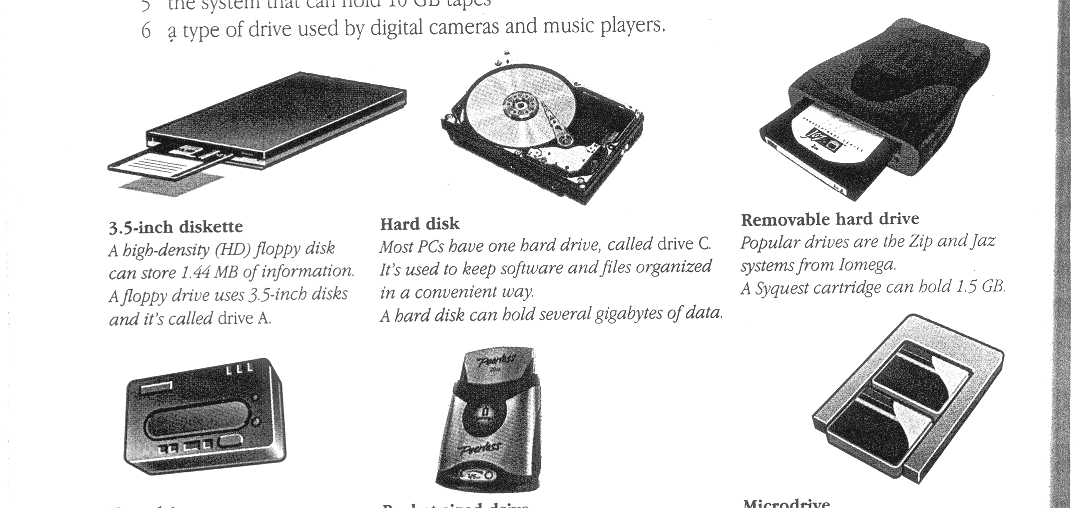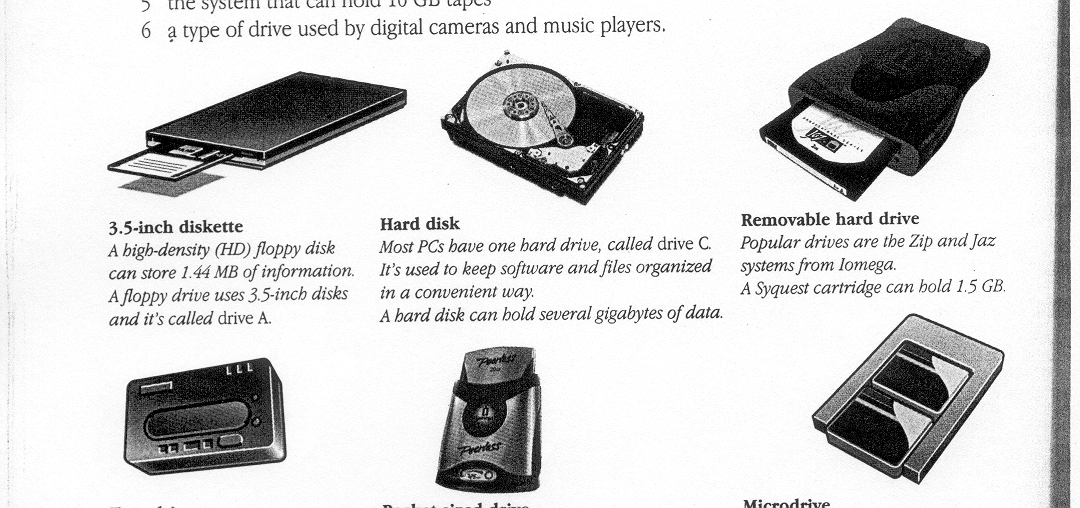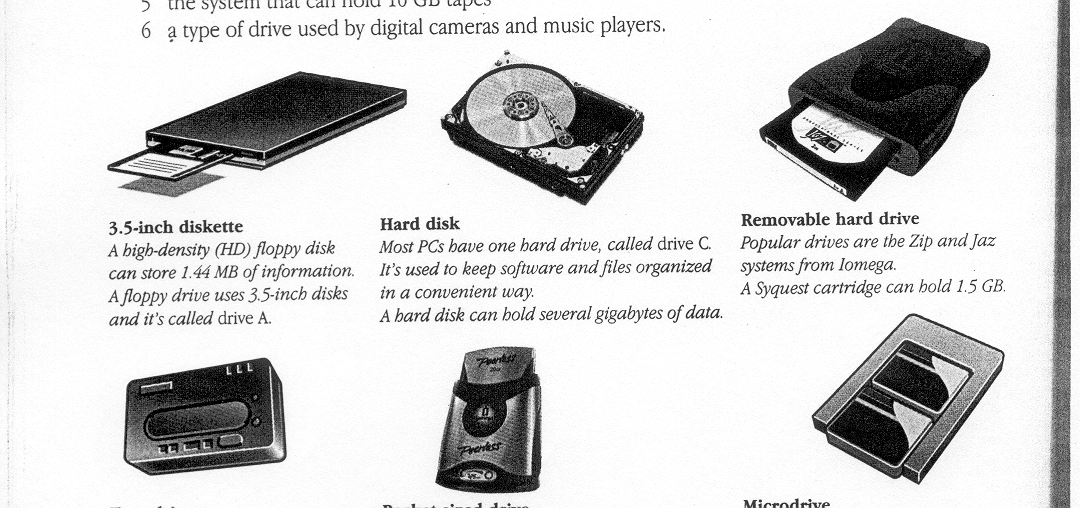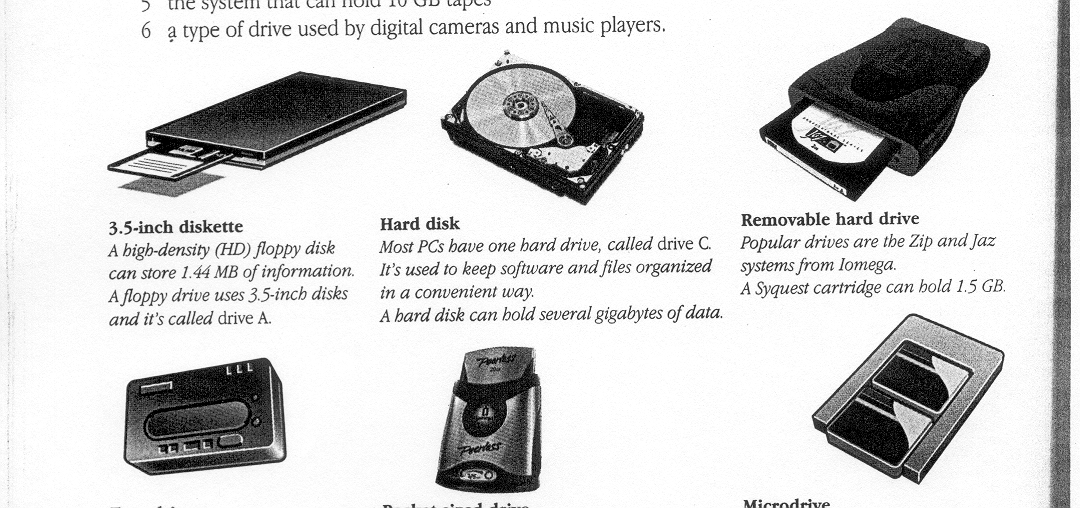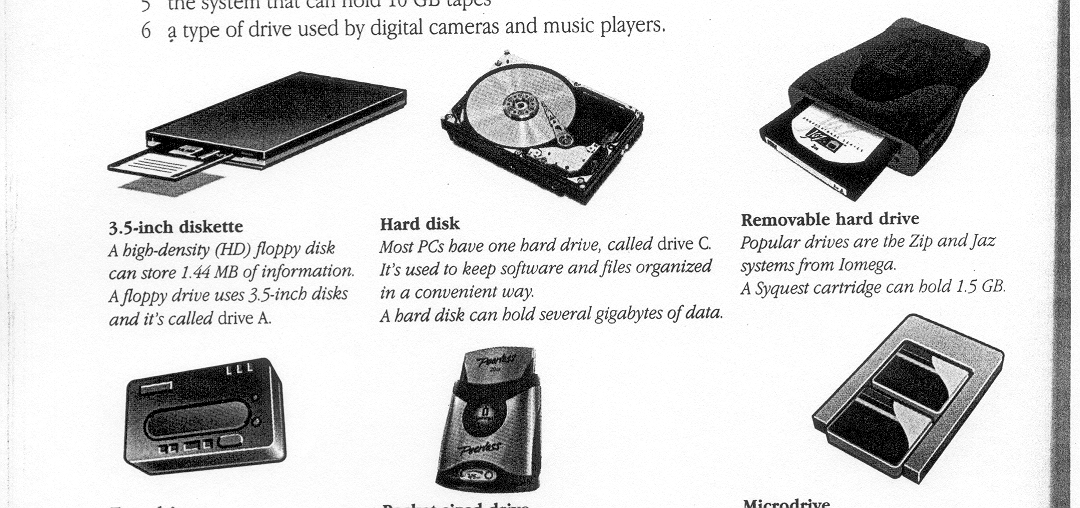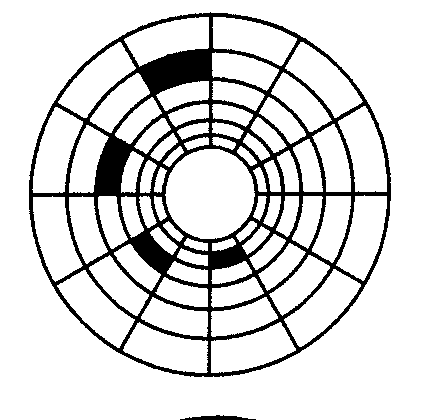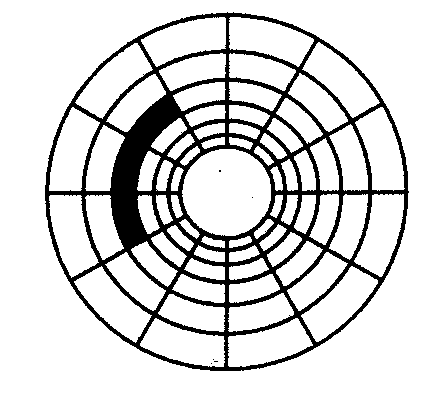
- •Unit 1 computer applications
- •Computers
- •What can computers do?
- •Unit 2 computer essentials
- •What is a computer?
- •Unit 3 inside the system
- •What’s inside a pc system?
- •Structure of the processor
- •Unit 4 bits and bites
- •Units of memory
- •Unit 5 magnetic drives
- •Technical details
- •Unit 6 optical breakthrough
- •Optical disks and drives
- •Iomega's removable drives
- •Unit 7 input / output devices
- •Voice recording device h. Keyboard
- •Unit 8 capture your favourite image
- •Vivid easy-to-use faster fashionable wide shots
- •Unit 9 viewing the output
- •The monitor
- •Unit 10 choosing a printer
- •Types of printers
- •Unit 11 operating systems Exercise 1.Look at the diagram below. What is the function of the operating system?
- •Exercise 4. Language work
- •Unit 12 the graphical user interface
- •Unit 13 a walk through word processing
- •Word-processing facilities
- •Unit 14 spreadsheets
- •Unit 15 databases
- •Basic features of database programs
- •Exercise 6. Writing
- •Unit 16 faces of the internet
- •Exercise 2. Maybe we can find it on the Internet.
- •Exercise 3. Reading.
- •Internet software
- •Irc, audio and video chatting
- •MIrc for Windows is a typical Internet relay chat program. You can get it at http://www.Mirc.Co.Uk/
- •Unit 17 programming and languages
- •Programs and programming languages
- •Exercise 3. These are answers to questions about the text. Write the questions.
- •Variables and the Declaration Statement
- •Unit 18 computer networks
- •Computer networks
- •Network configurations
- •4 Bus/Ethernet
- •Unit 19 computer viruses
- •How computer viruses work
- •Unit 20 computers in the office
- •Information systems
- •Using Computers
- •Information Technology (it)
- •Exercise 5. Link each statement (1-) with a purpose (a-j).
- •Exercise 6. Match the words from the box with their definitions.
- •The future? We’re virtually there!
Unit 5 magnetic drives
Exercise 1. Types of drives
Look at the illustrations and find out:
the size of a floppy disk
the storage capacity of a high density diskette
the name of a hard drive on a PC platform
the storage capacity of a SyQuest cartridge
the system that can hold 10 GB tapes
a type of drive used by digital cameras and music players.
|
|
|
|
3.5-inch diskette A high-density (HD) floppy disk can store 1.44MB of information. A floppy drive uses 3.5-inch disks and it's called drive A. |
Hard disk Most PCs have one hard drive, called drive C. It's used to keep software and files organized in a convenient way. A hard disk can hold several gigabytes of data. |
|
|
|
|
Removable hard drive Popular drives are the Zip and Jaz systems from Iomega. A Syquest cartridge can hold 1.5 GB. |
Tape drive A tape drive stores data on tape cartridges. It's used for backup purposes. A Digital Audio Tape drive can hold up to 10 GB of data. |
|
|
|
|
Pocket-sized drive Ultra portable drives are used with mobile computers. They hold 40 MB disks. The Peerless system can hold 20 GB disks, which allows you to store thousands of MP3s and video games. |
Microdrive A Microdrive is the smallest hard drive for digital cameras, laptops, and audio players. It comes in 340 MB and 1 GB capacities. It uses a PC Card adapter. |
Exercise 2. Protect your data
A Match the instructions to the pictures.
Protect your floppies against high temperatures.
Check for viruses before opening files you receive from the Web or via
e-mail.
Keep back-ups (spare copies) of your data.
Magnetic fields can damage the information stored on disks. Don't leave them near the telephone.
Keep disks away from water and humidity.
W
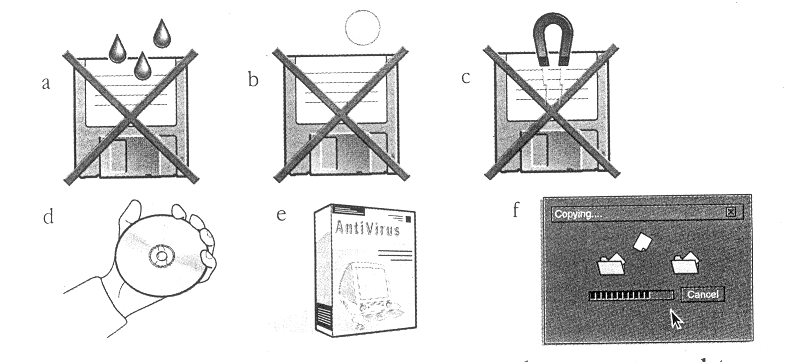 hen
handling CDs or DVDs, hold the disks around the edge.
hen
handling CDs or DVDs, hold the disks around the edge.
B In pairs, tell each other what you must or mustn't do to protect your data.
Example: You mustn't stack disks on top of each other.
disks in a protective case
into the disk drive very carefully
near magnets; they can damage the information stored on them •
update your anti-virus program regularly since new viruses are created everyday
passwords and security devices to protect confidential information
Exercise 3. Reading.
A Read the text and match the terms on the left with the explanations on the right.
backing store a a catalogue of where each piece of data is stored and how to find it
floppies b recording heads
disk drive c secondary memory
formatting d diskettes
directory e initializing; setting tracks and sectors on magnetic disks
read / write heads f a device which spins disks and contains a read/write head
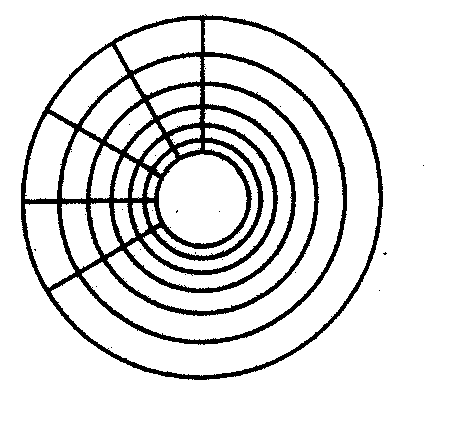
B Look at the illustration. Identify some tracks and sectors.
Technical details
Floppy disks are so called because they consist of flexible, plastic material which has a magnetizable surface.
The surface of a disk is divided into concentric circles or 'tracks', which are then divided into 'sectors'. When you insert a blank disk into a disk drive, it must be 'initialized', or formatted, before information can be recorded onto it. This means that magnetic areas are created for each track and sector, along with a catalogue or 'directory' which will record the specific location of files.
When you save a file, the operating system moves the read/write heads of the disk drive towards empty sectors, records the data and writes an entry for the directory. Later on, when you open that file, the OS looks for its entry in the directory, moves the read/write heads to the correct sectors, and reads the file into the RAM area.
Hard disks work in the same way as floppies. But they have important advantages: they can hold much more data and spin at higher speed, so you can store and retrieve information much faster than with floppies. The speed at which a hard drive finds data is called 'access time' – or seek time. The average access time is measured in milliseconds (ms). Most hard drives have an access time of 8 to 14 ms.
You have to distinguish between access time 30 (e.g. 9 ms) and 'data transfer rate' (the average speed required to transmit data from a disk system to the RAM, e.g. at 10 megabits per second). Remember that the transfer rate depends also on the power of your PC.
If you only use word-processing programs, you will need less storage capacity than if you use CAD, sound and animation programs. If you need an extra hard drive, you should consider the type of mechanism. There are 'internal' and 'external' drives which are both rigid disks sealed into the drive unit, either within or attached to the computer.
Another type of hard drive, known as 'removable', allows you to record data on 'cartridges', which can be removed and stored off-line for security purposes. Some systems allow you to back up your entire PC on one disk.
Laptops use pocket-sized drives. Digital cameras and music players use microdrives be with special cards.
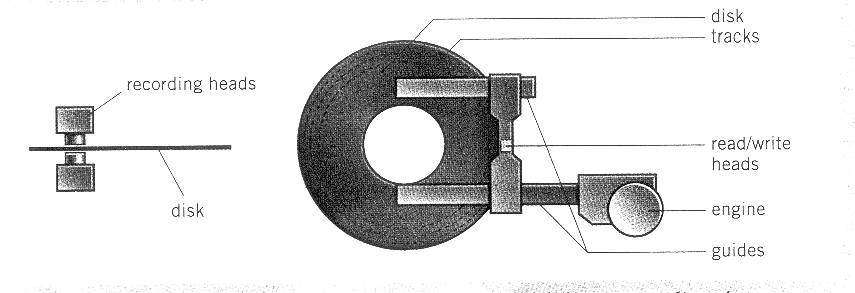
A floppy disk drive spins at 360 revolutions per minute. A hard disk drive spins at 7,200 rpm and stores data on a stack of metal rotating disks, called platters.
C Now read these sentences and decide if they are true (T) or false (F).
Hard drives are faster than floppy drives.
'Access time' refers to the average time required for the recording heads to move and access data.
'Access time' and 'data transfer rate' mean the same.
Hard disks use rigid rotating disks.
A hard drive is about 20 times faster than a floppy disk drive.
If you use multimedia applications you need the same storage capacity as required for word processors.
Removable cartridges are not transportable.
Exercise 4. World building
Look at the groups of words and decide what class each word belongs to: noun, verb, adjective or adverb. Complete the sentences.
|
magnet magnetic magnetically magnetism magnetize magnetized |
_____ is the science of magnetic phenomena and properties.
Floppy and hard disks are considered as ______ storage devices.
Data is recorded on a disk in the form of _____ spots called bits.
|
record recorder recording recorded |
All disks must be initialized before information can be _____ onto them.
The ______ heads follow the tracks and magnetize the coating along each track.
A disk drive works very much like a tape _____ that can both play and record.
|
fragment fragmentation defragmenter |
After you create, delete and modify a lot of files, the hard disk becomes _____, with bits and pieces spread all over the disk.
_____ slows down the speed at which data is accessed because the disk drive has to work harder to find the parts of a file stored in many different locations.
To reorganize your hard disk, you can use a disk optimizer or _____: this will reorder your files into contiguous clusters.
|
|
|
|
In a fragmented disk, a file is stored in non-contiguous sectors
|
In a defragmented disk a file is stored in neighbouring sectors
|


